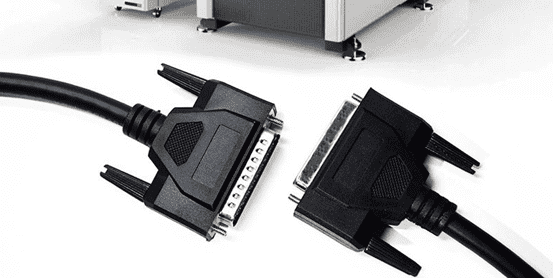- All
- Product Name
- Product Keyword
- Product Model
- Product Summary
- Product Description
- Multi Field Search
Views: 2 Author: Site Editor Publish Time: 2022-07-20 Origin: Site
What is D-SUB connerctor?
The D-Type or D-Sub (D-subminiature) connector was first developed by Cannon in 1952 and continues to be used today in a variety of electronic products, including computer video and serial data links. But it is probably most widely known as the connector used for RS-232 serial links.
The D-type connector has been used for serial links on most computers for many years, and we can still find variations of the D-type connector on most computers today. D-Sub is also used on many computer video links, connecting computers to monitors, projects, and other video displays.
D-Sub connectors were originally called subminiature connectors. Hence they were called D-sub connectors, or simply D-sub. Of course, its hours relative to the time, and now D-SUB connectors have nothing to do with subminiature.

D-SUB connector design
D-sub connectors, or D-type connectors, most often consist of two or more parallel rows of connections. The connector has a D-shaped metal housing, hence the name of the series, and the D-shape also prevents the connector from being inserted in the wrong way, making for an easy connection.
The D-shape not only provides mechanical strength to the connector but also provides some limited shielding - the metal shells of the plug and receptacle touch to provide shielding.
In addition, panel mount connectors are typically secured to the panel using a nut with an additional thread that allows the mating connector to be secured to the panel to prevent it from loosening. This threaded design is handy in applications where vibration may be present or where the connection may be loose for other reasons.
In addition, free connectors can have backshells that can provide shielding and can be attached to the cable shield, or if they are plastic, they can provide protection. Strain relief on the cable is also provided.
Connectors that contain pins are male D-type connectors, while connectors that contain socket pins are female connectors.
The original D-type connectors had two rows on the pins - the total number of pins was odd, which caused the connector to have one more pin in one row than the other, creating a D-shape, which also prevented the connector from mating in the wrong direction.
D-SUB Connector Numbering
The original numbering system for D-SUB connectors used a D as a prefix (for its naming series) followed by A, B, C, D, or E, depending on the housing size. Followed by a number indicating the number of pins. The last letter is P or S, indicating whether the connector is a plug or a socket, respectively.
For example, DB-25P stands for 25-pin D-type plug; DE-9S stands for 9-pin receptacle.
This original series of D-type connectors have pin counts of 9, 15, 25, 37, and 50 pins and is also available in 19-way. Standard pin configurations are A=15 pins, B=25 pins, C=37 pins, D=50 pins, and E=9 pins.
The pin spacing in the more common connector types with two rows of pins (e.g., 9, 15, 25, and 37-way) is approximately 0.108 inches (2.74 mm), with rows spaced 0.112 inches (2.84 mm) apart.
Using more pin rows allows for a higher pin count and higher pin density.
Beware of the confusion that some suppliers/manufacturers sell connectors under incorrect model names. Sometimes connectors that should be designated as DE-09 are sold as DB-09. DB-9 almost always refers to a 9-pin connector with an E-size housing.
D-sub Specialized Variants
While standard density, high density, and dual density D-sub formats will meet most requirements, there are times when particular variants may be required.
For example, a coaxial connection may be required. Or, high current pins may be required. These usually require the use of specialized D-sub connectors to meet.
Cannon, the original manufacturer of D-SUB connectors, also produces variants of D-SUB connectors with higher current carrying capacity than standard connectors. Today, many manufacturers produce D-sub connectors with coaxial inserts. These are very useful for sending composite video (RGB, etc.) over cables with D-SUB connectors.
Micro-D and Nano-D sub connectors
When D-SUB was first introduced, it was a tiny connector at the time. As modern technology advances, the original D-SUB needs to become smaller to accommodate today's new electronic circuit designs. To meet these needs, Micro-D and Nano-D sub connectors emerged.
The names and styles micro-D (micro-D) and nano-micro-D (nano-D) are trademarks of ITT Cannon. In terms of their size, the Micro-D is approximately half the length of a standard D-sub, and the Nano-D is approximately half the length of a Micro-D.
D-SUB connectors are often used in the military and aerospace industries because of their excellent functionality, consistent quality, and compliance with relevant MIL standards.
Above is some basic knowledge about D-SUB connectors. You can browse our "D-SUB Cable" product category to learn more about different D-SUB types. Custom D-SUB cable welcome to contact the professional D-SUB cable manufacturers --Maojia.